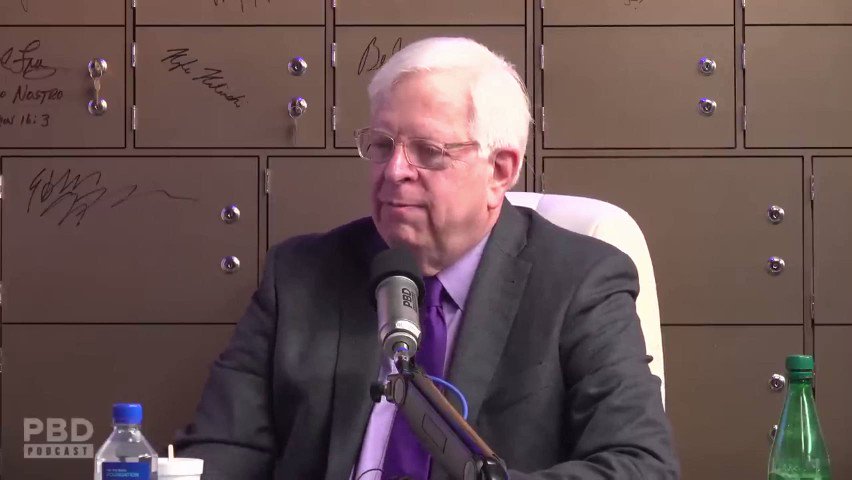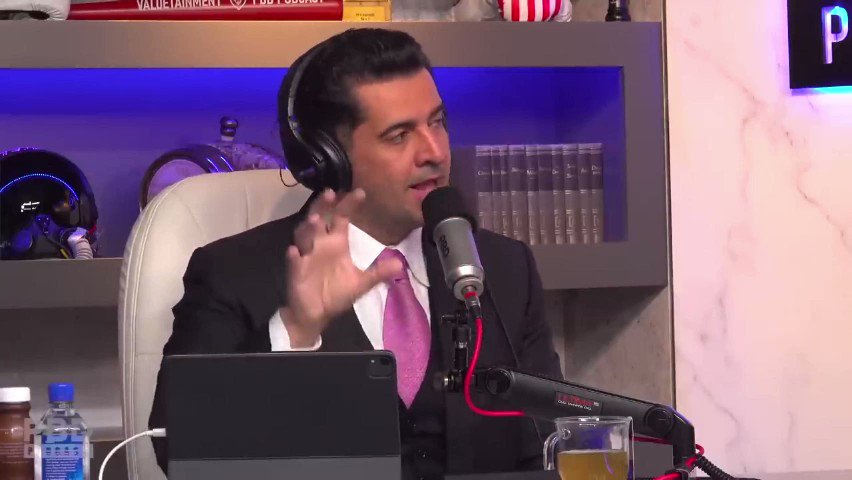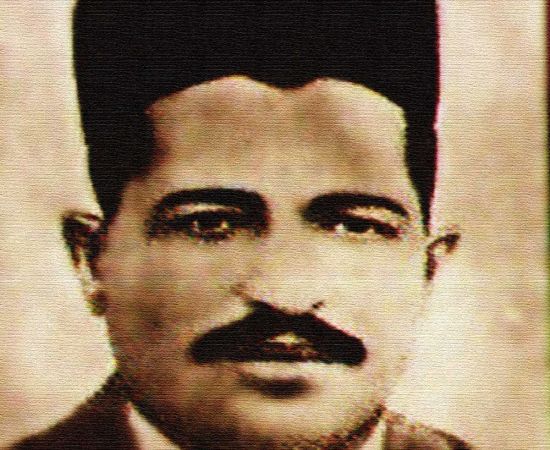More Coverage
Twitter Coverage
Satyaagrah
Written on
Satyaagrah
Written on
Satyaagrah
Written on
Satyaagrah
Written on
Satyaagrah
Written on
JOIN SATYAAGRAH SOCIAL MEDIA
"RAW Officer Who Vanished in 2004": The Making of India’s Most Dangerous Double Agent, Rabinder Singh who leaked 212 secret files, exposed agents, collapsed RAW’s networks, and fled to the U.S. via Nepal with CIA help in India’s worst betrayal ever

There are traitors who betray for ideology, and there are traitors who betray for money. Then there are those like Rabinder Singh, who "sold out the people of the country for personal luxury and comfort." He wasn’t just a minor cog in India’s intelligence machinery. He was a high-ranking officer in RAW — the Research and Analysis Wing, India’s most elite and secretive intelligence agency. And yet, he went down in history as "the biggest traitor in RAW."
RAW has long been one of the strongest arms of India’s defence, conducting covert missions across the globe and working silently to protect the nation's interests. It is thanks to the bravery and dedication of many of its officers that RAW stands among the most powerful intelligence agencies in the world. But even the most solid structures have cracks. In RAW’s proud history, there lies a shadow — a few dark chapters of betrayal. Among those, one name rings louder than the rest: Rabinder Singh. His story is not just one of espionage. It is a grim tale of treason, of trust broken at the highest level, and of national security compromised by a man driven by ambition and greed. "This is the story of RAW’s biggest traitor — a man who not only broke the agency’s trust but also dealt a serious blow to India’s national security."
Singh’s journey began with promise. He was born into a well-off Punjabi household in Amritsar. His father, a lieutenant in the Indian Army, ensured a disciplined upbringing. Following the military tradition, Singh joined the Indian Army’s prestigious Gorkha Rifles in 1970. Despite his entry into one of the most respected regiments, his seniors were not impressed. He was often described as “a dull, mediocre” soldier with “low retentive powers.” Yet, fate placed him at the heart of history.
In 1984, Singh participated in Operation Blue Star, a tense and tragic campaign inside the Golden Temple to flush out Khalistani militants. His involvement in this sensitive military operation brought him into the radar of R&AW. Shortly after, he left the Army and entered a much murkier world — intelligence.
In the late 1980s, Singh made a career switch that would change everything. He joined Research and Analysis Wing, India’s external intelligence agency. It wasn’t a move earned by merit but a recommendation from a family friend that helped him get into RAW — a fact that, in hindsight, seems ironic given how trust became the biggest casualty of his later actions.
While working for RAW in Amritsar, Singh built a strong local intelligence network. He worked closely with the local police, engaged in covert operations against Pakistani intelligence services, and was involved in various classified missions. However, murmurs of wrongdoing soon began. There were quiet conversations among peers and seniors about potential embezzlement of operational funds. These weren’t just baseless suspicions — they were early signs of a man beginning to slide into betrayal.
As the years passed, Singh climbed the ranks. He became a highly trained officer with a reputation for foreign language skills and strategic analysis. His competence secured him prestigious postings in Indian embassies abroad, where he had access to extremely sensitive information.
|
International Postings and the Beginning of CIA Contact
Within the tight-knit circles of RAW, Singh steadily rose to prominence. He attained the post of Joint Secretary — a level few reached. His most important assignment was heading RAW’s South-East Asia Division and later, the Southeast Asia–Far East desk at its headquarters in New Delhi. It was a crucial position, one that dealt with regional intelligence that had strategic implications for India’s national security. Alongside this, Singh held diplomatic titles in several Indian missions overseas.
In 2001, he was posted as First Secretary (Consular) at India’s Embassy in The Hague, Netherlands. According to Indian reports, "he showed at least nine classified Indian documents to a U.S. embassy official there." The act, seemingly small in the vast ocean of international espionage, would turn out to be the first direct step in his betrayal. RAW responded by sending investigative teams to Geneva (Switzerland) and Damascus (Syria) in 2006 — cities where Singh had earlier served — to unearth the extent of his information leaks.
The more they dug, the more disturbing details came to light. Singh had a deep obsession with foreign postings, especially to the United States, and lived a lifestyle that far outstripped his government salary. He threw lavish parties in 5-star hotels, flaunted an extravagant lifestyle, and collected assets that made no financial sense for a RAW officer. His peers began to take note.
Despite these warning signs, Singh was trusted enough to be made RAW’s station chief in Europe, one of the most critical and confidential appointments within the agency. His domain extended to key intelligence hubs like France and Nepal, where India’s strategic interests were tightly interwoven with global geopolitics.
But then came the turning point — a seemingly minor but, in hindsight, a monumental event. "He reportedly leaked details of a secret Indian Air Force visit to an American diplomat" — a moment widely believed to be the formal beginning of his contact with the CIA.
Back in 1992–93, following an accident that left his daughter injured, Singh had requested a transfer to Washington. But his request was rejected. That denial may have planted the seed of resentment. Over time, as his colleagues watched his life unfold like that of a wealthy businessman rather than a civil servant, they couldn’t ignore the red flags anymore.
The oddest of all was perhaps his strange behaviour around the office photocopy machine. He would spend late hours photocopying sensitive documents, often unmonitored. It seemed like a quirk until it became part of a much darker puzzle — one that would eventually expose Singh as a mole inside India’s most secret agency.
|
Espionage, Escape, and the Collapse of Trust Inside RAW
By the early 2000s, Rabinder Singh’s behavior inside RAW headquarters in Delhi had become more than just suspicious — it was alarming. People noticed, but they weren’t yet sure what to make of it. It wasn’t just paranoia. Over time, investigators would uncover a chilling truth: Singh had been routinely copying classified documents, sneaking out “top secret” reports during office hours, often during lunch breaks, and carrying piles of printed pages back home. Office tapes later revealed these acts. And while most RAW officers lived modestly, Singh stood out with a “flamboyant” lifestyle, spending heavily and socializing beyond his pay scale. Most troubling, however, was his unauthorized contact with foreign embassy officials — particularly the U.S. diplomat he had earlier met in The Hague.
As suspicion mounted, RAW conducted an internal audit. What they discovered was staggering. Singh had photocopied at least 212 classified documents and taken them beyond RAW’s secure boundaries. That wasn’t carelessness. It was systematic espionage.
This triggered a red alert within the agency. The matter was handed over to the Counter Intelligence Division, led by senior officer V.K. Bhushan, a man known for his precision and thoroughness.
In January 2004, the plot thickened. A junior RAW officer grew increasingly concerned and reported Singh’s erratic behavior to the agency's security chief. That tip-off launched an immediate response. RAW’s counter-intelligence wing began full-scale 24/7 surveillance. Singh’s phones — both at work and home — were tapped. Hidden cameras were secretly installed inside his office, even inside air-conditioning ducts, and bugs were placed in his residence and official vehicle. Nothing was left to chance. One operative was even embedded in the gym where Singh exercised. Day by day, the web closed around him.
The intelligence footage confirmed their worst fears: Singh was photocopying secret files daily. In response, RAW installed a special photocopy machine that logged each document scanned. What it revealed was beyond disturbing. In just 16 days, Singh had copied over 210 classified reports, containing highly sensitive information on India’s intelligence strategies in Afghanistan, Pakistan, and the broader South Asian region.
Then came the breaking point.
In mid-2004, Singh’s personal assistant (a peon) was caught driving out of RAW headquarters with 13 classified files in Singh’s personal vehicle. A full building sweep followed. What they discovered left everyone stunned. A large stash of top-secret documents — along with pornographic material — was found hidden in a disused room. RAW termed this “the turning point.” Singh likely sensed that the net had tightened around him. Yet despite overwhelming suspicion, RAW had no concrete evidence about Singh’s foreign handlers, and therefore chose not to arrest him immediately. Later, internal memoirs revealed that even the RAW chief considered halting the surveillance, hoping to gather more evidence first.
By this point, it was clear: Singh was not just leaking information — he was preparing for a grand escape.
|
Escape via Nepal (April–May 2004)
RAW officers grew restless. They knew Singh was up to something, but the concrete proof still eluded them. Then, Singh made his move.
Citing his daughter’s engagement, Singh requested leave. The request was denied. But Singh, sensing his time was limited, began making arrangements to flee.
In April 2004, Singh attempted to smuggle out another batch of classified documents. RAW conducted a raid, but this time too, they failed to seize solid proof.
Then, in late April 2004, under the pretext of a long holiday, Singh vanished. Along with his wife Parminder Kaur, he slipped away to Nepal by road. On May 1, 2004, they crossed the border and met with U.S. contacts in Kathmandu. What happened next confirmed everyone's worst fears.
According to RAW records, the couple obtained fresh U.S. passports dated April 7, 2004, issued under the aliases Rajpal Prasad Sharma and Deepa Kumar Sharma. In Nepalgunj, they met CIA agent David Vakala and then proceeded to Kathmandu. Finally, on May 5, 2004, they boarded an Austrian Airlines flight (OS-032) to Washington D.C. via Vienna, effectively disappearing forever from Indian soil.
In a damning revelation later, RAW’s counter-intelligence chief Amar Bhushan wrote that even India’s top political leadership may have played a role in Singh’s escape. He alleged that the ruling coalition in 2004 asked RAW not to arrest Singh during the general elections to avoid triggering a security panic. The CIA’s involvement was undeniable. Bhushan claimed the CIA station chief in Kathmandu was recalled and forced to retire after botching the evacuation operation. RAW’s internal assessment described the breach as “the most grievous penetration of the R&AW in recent years.”
Search, Raids, and the Final Clue
After Singh fled, RAW scrambled into damage control. Their teams raided homes, scanned airports, and questioned relatives, but found no trace.
Then came a breakthrough. A laptop found in Singh’s residence revealed email records of sensitive intelligence being transmitted abroad — a final confirmation of his betrayal.
In 2005, the Indian government took action. Singh was dismissed under Article 311(2)(c) of the Indian Constitution, which allows termination without a departmental inquiry for reasons of national security. No public criminal case was filed, likely to avoid the diplomatic embarrassment of admitting that a senior RAW officer had defected with secrets.
The fallout was massive. RAW’s operations in the U.S. and Pakistan were completely compromised. Networks carefully cultivated over years in South Asia collapsed overnight. Agents had to be recalled or cut off. Trust eroded within and outside the agency.
Worse, the incident created a cold rift between the CIA and RAW. RAW had to conduct a full internal overhaul of its security and counter-intelligence systems. The 2004 disappearance of Rabinder Singh was no ordinary news story — it shook the foundation of Indian intelligence.
The investigation confirmed Singh’s long-standing connection with the CIA. Initial suspicions had arisen years earlier, during his posting in Damascus, where his lavish lifestyle and suspicious friendships had drawn attention. One major incident confirmed this: “Singh leaked details of a classified Indian Air Force visit to an American diplomat,” which likely initiated his relationship with the CIA.
|
Leaking India’s Most Sensitive Intelligence
The gravity of Singh’s betrayal became clearer with time. He handed over the names of foreign spies working for India, exposed agent networks, and leaked classified mission details. It was espionage on a catastrophic scale.
As a direct result, dozens of Indian assets were arrested, some were tortured, and several were killed. RAW’s credibility was shattered. The agency had to rebuild everything — from scratch.
The timing couldn’t have been worse. In 2004, with general elections approaching, Singh’s disappearance was a national embarrassment.
In 2006, the government announced it had gathered extensive documentary and video evidence of Singh’s espionage and planned to charge him. RAW reportedly wanted him booked under the Official Secrets Act and the National Security Act (NSA). There were also plans to seize 15 properties Singh owned across Delhi and other cities.
Investigators interrogated his staff and even travelled to Geneva and Damascus to follow his trail.
In 2007, India made a formal move: Singh was officially accused of leaking “top secret” documents. The government sought an international arrest warrant. A RAW letter to CBI dated December 2006 detailed his escape route and aliases, requesting a Red Corner Notice from Interpol.
But in 2007, Interpol refused, calling the charges “political.”
In January 2009, Singh and his wife were declared proclaimed offenders after CBI couldn’t serve the warrants. The case continues in absentia with evidence being recorded under Section 299 of the CrPC. Meanwhile, the Ministry of External Affairs requested extradition under the Indo-US treaty, but Washington refused to cooperate.
To this day, the U.S. has never publicly commented on Singh’s case. In 2007, India merely confirmed that it wanted him tried under the Official Secrets Act. Singh’s Indian passport was marked “lost,” and his new identity in the U.S., "Rajpal Sharma," remains unverifiable.
The Making of a Fugitive – A Nation Betrayed, A Spy Disappeared
From the outside, Rabinder Singh was a disciplined officer—a man with decades of service behind him. But behind closed doors, “Singh’s escape was meticulously planned.” This wasn’t a hasty getaway. It was a calculated vanishing act, pulled off with surgical precision. And RAW had no clue. For a while.
It wasn’t until surveillance teams reviewed weeks of footage and communications that the truth surfaced — Singh had maintained secret and consistent contact with American officials. This wasn’t just espionage anymore. It was treason, wrapped in diplomacy and buried under layers of intelligence maneuvering.
Once RAW realized the seriousness of Singh’s contact with the U.S., they immediately tried to recall him to India. But by then, he had already vanished through Nepal. The agency had acted too late.
At the time of his escape, Singh did not have U.S. citizenship, but the CIA facilitated his safe extraction and entry into the United States. That fact alone rewrote the rules of international intelligence diplomacy. An Indian citizen, with no American status, had been smuggled into U.S. territory under covert protection. It was the kind of story that only the boldest spy thrillers dared to tell — except this wasn’t fiction.
Embarrassed and exposed, the Indian government and RAW kept the case highly classified. Not a single official statement was made in public. But within corridors of power, among former officers, and in classified files, the whispers were unanimous: “this remains the worst espionage failure in RAW’s history.”
After Singh’s betrayal, RAW overhauled its internal systems. Promotions to higher positions now underwent more rigorous psychological evaluations and deeper family background investigations. The agency that had once trusted Singh blindly was forced to question everything it knew about loyalty, recruitment, and internal vigilance.
|
CIA’s Silence and America’s Role
Through it all, the United States never officially admitted that Rabinder Singh was a CIA asset. Yet, the evidence surrounding his escape tells a different story. The CIA’s involvement was never publicly claimed, but never denied either. His swift asylum, his new identity, his complete disappearance — all pointed to a well-executed covert operation.
The diplomatic damage was immense. While it didn’t spark a public war of words, the Singh affair strained India-U.S. relations. It became a topic buried deep under diplomatic silence, left to rot in classified briefings and off-the-record conversations.His exact location remains a mystery. But intelligence insiders believe “Singh lives somewhere in the United States under a new identity.” Even today, Indian intelligence agencies keep trying to track him, but “penetrating American security to track him down is virtually impossible.”
RAW’s last known information was that, in late 2006, Singh and his wife were living at 761 Keithley Drive, Great Falls, Virginia. After that, the trail went cold. Journalistic reports from the 2010s suggest he may have resided quietly in New York, Maryland, or Virginia near extended family. One rumor even claimed that Singh died in a car accident in 2016, but no official confirmation ever followed.
The Sunday Guardian shed light on what happens to defected spies: “once RAW officers land in their country of refuge, Western agencies typically give them a new identity… treat them as well-guarded assets,” eventually offering them citizenship and a new life. Singh likely followed this path. Whether he still communicates with his former CIA handlers remains unknown.
But one truth stands out. From India’s perspective, Singh’s escape destroyed trust. RAW insiders admit that “Singh’s escape, facilitated by the CIA, has undermined any presumption of friendship.”
The Impact of This Betrayal
• Collapse of Indian Intelligence Networks: Many of India’s secret missions abroad had to be rebuilt from scratch. Entire networks were dismantled, compromised beyond repair.
• Loss of Foreign Agents: Dozens of India’s operatives were arrested, tortured, or killed, directly due to Singh’s betrayal.
• Damage to RAW’s Global Reputation: After Singh’s defection, India’s intelligence agency was no longer seen as untouchable. Its credibility took a brutal hit.
• Stricter Recruitment and Screening: Psychological tests and background verifications became the new standard for all high-level appointments.
• Trust Deficit with CIA: The alliance with the U.S. intelligence agency was never the same. India began deepening ties with Russia and Israeli agencies instead.
Among India’s long and painful history of betrayal, “Rabinder Singh ranks the highest — not merely for his betrayal, but because he endangered the lives of brave intelligence operatives, many of whom made the ultimate sacrifice.” He wasn’t just corrupt. “Singh’s betrayal was strategic, lethal, and irreversible.”
His story is a warning, a live case study in every counter-intelligence training room: “a chilling reminder of how one man can cripple a nation’s security from within.”
For RAW, it meant rethinking everything — their structure, their screening, and their sense of internal loyalty.
Yet, through it all, one truth stands strong: “Despite a few traitors, RAW continues to stand tall — backed by thousands of nameless heroes who sacrifice their identities and lives in the service of the nation.”
It all began with a small clue in late 2003, when Singh started showing suspicious enthusiasm for classified documents. That little spark unraveled one of the biggest internal breaches in Indian intelligence history. More than Singh’s defection, it raised terrifying questions: Who is really an ally? Can intelligence alliances be trusted?
And still, Singh himself has remained out of reach.
RAW’s internal updates claimed, “In late 2006 RAW informed the CBI that he and his wife were living as U.S. residents at 761 Keithley Drive, Great Falls, Virginia.” But beyond that, nothing concrete was ever found.
Media outlets like Firstpost suggested Singh may have died in a road accident in 2016, but no official source ever confirmed it. Like many defectors, Singh simply vanished into the fabric of another country.
The Rabinder Singh betrayal forced RAW to look inward. Critics still argue that India lacks independent parliamentary oversight over agencies like RAW. The counter-intelligence division remains understaffed, even after scandals of this scale.
Some reforms did follow — tighter security, stricter surveillance — but analysts say too much still remains behind closed doors. Singh’s story entered popular culture too — the 2018 novel Escape to Nowhere by Amar Bhushan, and its 2023 Netflix film adaptation Khufiya, based on declassified files of this very betrayal.
In every retelling, Rabinder Singh’s name is remembered as a synonym for treachery.
The Lingering Shadow on Intelligence Relations
RAW completed its internal investigation in 2005, and reportedly named several senior officers who enabled Singh’s treason, either through negligence or direct involvement. But that report was never made public.
In 2009, former RAW officer Yatish Yadav filed a transparency petition seeking names of 57 RAW employees who allegedly helped Singh. The plea was dismissed for lack of proof. Privately, however, former RAW officials acknowledged the worst: 57 officers shared intelligence with Singh, and 31 of them actively helped him — yet they were never punished, just silently reposted abroad.
Globally, RAW–CIA ties were left bruised. As Amar Bhushan detailed, the CIA station chief in Kathmandu was retired, and a Langley operations director was disciplined. Unlike CIA traitor Aldrich Ames, who now languishes in U.S. prison, Singh vanished into anonymity, likely enjoying American protection.
Some suspect that Singh may have given the CIA information about Pakistan, Afghanistan, or even India’s nuclear assets. Yadav’s memoir highlighted U.S. curiosity over India’s 1998 nuclear tests and Iraq-era WMD data. But whatever Singh gave, the breach hurt India more than it helped the CIA.
In 2023, The Hindu’s Frontline confirmed that RAW had internally admitted eight officers had defected or vanished since 1968 — pushing intelligence experts to demand reforms.
For now, Singh’s betrayal remains unmatched. A ghost in India’s spy history. An unhealed scar in RAW’s legacy.
 Support Us
Support Us
Satyagraha was born from the heart of our land, with an undying aim to unveil the true essence of Bharat. It seeks to illuminate the hidden tales of our valiant freedom fighters and the rich chronicles that haven't yet sung their complete melody in the mainstream.
While platforms like NDTV and 'The Wire' effortlessly garner funds under the banner of safeguarding democracy, we at Satyagraha walk a different path. Our strength and resonance come from you. In this journey to weave a stronger Bharat, every little contribution amplifies our voice. Let's come together, contribute as you can, and champion the true spirit of our nation.
 |  |  |
| ICICI Bank of Satyaagrah | Razorpay Bank of Satyaagrah | PayPal Bank of Satyaagrah - For International Payments |
If all above doesn't work, then try the LINK below:
Please share the article on other platforms
DISCLAIMER: The author is solely responsible for the views expressed in this article. The author carries the responsibility for citing and/or licensing of images utilized within the text. The website also frequently uses non-commercial images for representational purposes only in line with the article. We are not responsible for the authenticity of such images. If some images have a copyright issue, we request the person/entity to contact us at This email address is being protected from spambots. You need JavaScript enabled to view it. and we will take the necessary actions to resolve the issue.
Related Articles
- Exposed: Nitasha Kaul's ban from India, justified by her deep ties with anti-India groups & spreading venom, from testifying against India in US Congress to associating with extremist organizations, her actions reveal an agenda far from scholarly debate
- Biggest Secret Reveal - How ties between Indra Gandhi and KGB made India a puppet of USSR during the Cold War
- "The fall of Madhuri Gupta": From a trusted diplomat in Islamabad to a convicted spy for Pakistan’s ISI—wasn't just betrayal, but a haunting reminder of how love, loneliness, and systemic cracks can sabotage a nation from within, leaving wounds unhealed
- Top woke Vir Das chose Kennedy Centre for his Monologue 'Two Indias' to insult Bharatvarsh: Major backlash; netizens shocked
- Hyundai India promotes disintegration of Jammu and Kashmir from the Union of India: Started blocking netizens after they question whether they endorse their Pakistani counterpart’s views on Kashmir
- Explore the intense reactions to Ayodhya's Ram Mandir Pran Pratishtha, from Pakistan's critical stance and Indian left-liberals' outcry, to archaeologist KK Mohammad's call for Muslims to hand over disputed Gyanvapi, Shahi Idgah Structure to Hindus
- New York Times looks for anti-Hindu, anti-Modi candidates to spread propaganda: Dissecting the dangerous job opening
- On 2 years of anti-CAA violence, frustrated Arundhati demands ‘PM should be only for 5 years’ at Jamia event
- Fan pages of former Congress leaders, managed by the Congress IT cell rebranded as Maktoob media: Propaganda portal, publicizing Islamic propaganda and Hindumisia content, promoted by terror apologists
- "Ummah Brotherhood over Motherland": "J&K's bold move: 4 government employees - a doctor, constable, teacher, and a lab bearer - terminated for terror links, showcasing a resolute crackdown on internal threats and corruption within the state's machinery
- Fahad Shah, editor of the prominent Srinagar-based news portal 'The Kashmir Walla' arrested for anti-national activities and sharing provocative content on the social media platform
- Jawaharlal Nehru University A Centre Of Excellence, But It Must Get Rid Of The Anti-National Forces: JNU at At A Dangerous Inflection Point
- “When a sinister person means to be your enemy, they always start by trying to become your friend”: AS Dulat, who coauthored a book with former ISI chief and described death penalty to Afzal Guru was "unfortunate" joined Rahul Gandhi in Bharat Jodo Yatra
- "Manipulating minds, one tweet at a time": China cunningly exploits global social media, manipulating opinions through a web of deceit, Oxford Internet Institute exposesunchecked cyber onslaught, revealing China's ambitions to control global narratives
- “Hatred continues because they want it to. Or because they don’t want peace enough to stop it”: Days after anti-Brahmin graffiti appeared on JNU walls, Hindu Raksha Dal paints ‘Communists Bharat Chhodo’ slogans at the main gate of the campus




























